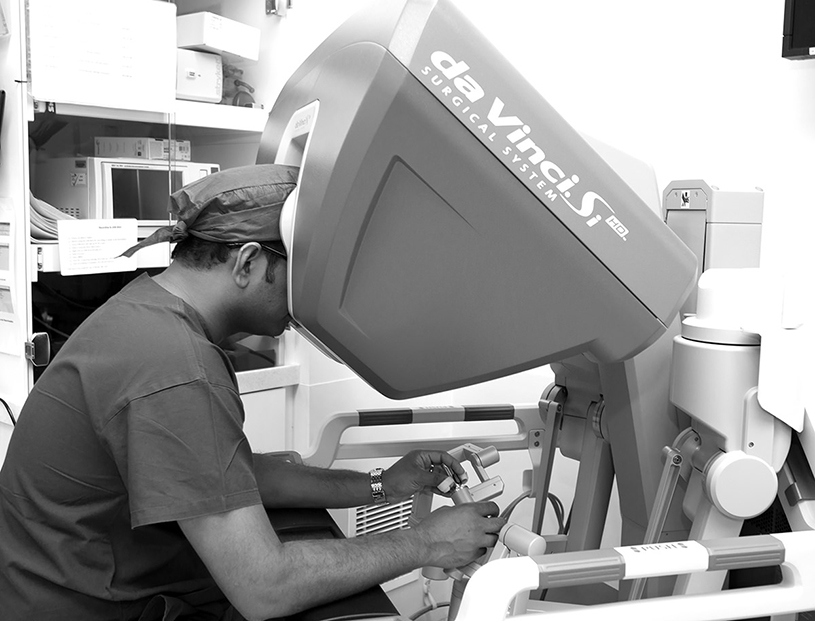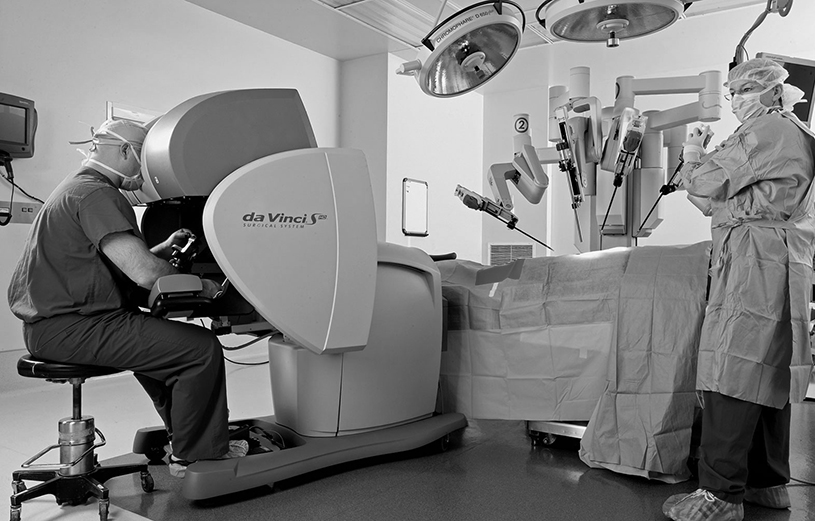A Guide To Urology Procedures
A Guide To Urology Procedures

Here is a helpful guide to urology procedures used to treat a wide range of conditions in the urinary tract and male (and female) reproductive system.
Dr Arianayagam is a highly skilled urologist with a wealth of experience performing a wide range of urology procedures, from cancer removal to treating more general urologic conditions. Let’s take a look at some of the most common procedures used to treat the urinary tract and male (and, in some cases, female) reproductive system.
To book an appointment, please feel free to call today.
Laparoscopy
Laparoscopy is a surgical procedure that employs fibre-optic instruments to inspect and operate on the organs inside the abdomen or the pelvic cavities. Through the use of fibre-optic technology, small incisions are made during the procedure and therefore it is low-risk and a minimally invasive operation. It is used to treat a wide range of conditions.
Robotic Surgery
Robotic surgery is a surgical method performed using small tools that are attached to a robotic system. Rather than the surgeon performing the procedure with their own hands, they control robotic arms with a computer. It is even less invasive surgery and can help reduce the risks of complications in certain surgeries.
Prostatectomy
Prostatectomy is used to describe a number of different surgical procedures to remove either part or all of the prostate gland. It is used to treat prostate cancer, benign prostatic hyperplasia (enlarged prostate), and other conditions that affect the prostate gland. The procedure may be performed open, laparoscopically or robotically.
Nephrectomy
Nephrectomy is a surgical procedure to remove either part or all of the kidney. It is usually carried out in order to treat cancer and other kidney diseases, to remove an organ that is damaged or to remove a healthy kidney for transplantation. The procedure may be performed open, laparoscopically or robotically.
Cystectomy
Cystectomy is a surgical procedure to remove either part or all of the bladder, usually to treat bladder cancer. Or it may also be required to treat injuries to the bladder, neurological conditions affecting the urinary system and birth defects that affect the urinary system. It too may be performed open, laparoscopically or robotically.
Adrenalectomy
An adrenalectomy is a surgical procedure to remove either one or both of the adrenal glands, which are located just above the kidneys and produce certain hormones. Adrenalectomies are commonly used to treat benign or cancerous tumours in the adrenal gland. Other reasons may include excessive secretion of a hormone that can cause harmful side effects. It may be performed open, or laparoscopically.
Vasectomy
Vasectomy is a surgical procedure for permanent contraception in men. It involves cutting and blocking the vas deferens – a tube located in the groin that carries sperm from the testicles to the penis.
Ureteroscopy
Ureteroscopy is a surgical procedure that employs a small, flexible instrument called an ureteroscope to inspect and treat issues inside the kidneys and urinary tract. It is most often used to treat kidney stones or ureteric stones. It also may be used to inspect and treat cysts, tumours or abnormal tissue in the bladder, ureter or on the lining of the kidney.

Transurethral Resection of the Prostate (TURP)
A transurethral resection of the prostate – commonly abbreviated as TURP – is an operation on the prostate gland for men who are having trouble urinating due to enlargement of the prostate gland.
Pyeloplasty
Pyeloplasty is a surgical produce to operate on the renal pelvis in the kidney where the urine is collected after it is produced. At the junction of the renal pelvis and the ureter there can often be a blockage. This is called a pelviureteric junction (PUJ) obstruction and must be dealt with to avoid several long term complications including loss of kidney function, urinary infections and the formation of kidney stones.
Transurethral Resection of the Bladder
A transurethral resection of the bladder – often abbreviated as TURB or TURBT – is a surgical procedure to either operate on or inspect the bladder, usually to diagnose bladder cancer or to remove cancerous tissue.
Holmium Laser Enucleation of the Prostate (HoLEP)
Holmium laser enucleation of the prostate – otherwise more simply known as holmium laser prostate surgery or abbreviated as HoLEP – is a minimally invasive procedure to treat benign prostatic hyperplasia (enlarged prostate). It averts any metabolic complications associated with TURP and is far less invasive.
Thrombectomy
A thrombectomy is a surgical procedure to remove a blood clot (thrombus) from an artery or vein.
Retroperitoneal Lymph Node Dissection
Retroperitoneal lymph node dissection – abbreviated as RPLND or known as a lymphadenectomy – is a surgical procedure to remove cancerous abdominal lymph nodes to treat testicular cancer that has spread there.
Hysterectomy
A hysterectomy is a surgical procedure to remove the uterus (womb). It is usually performed to treat ovarian cancer, heavy or very painful menstrual periods, severe pelvic pain, fibroids, endometriosis, adenomyosis or pelvic inflammatory disease.
Dr Arianayagam is a high regarded urologist and skilled oncologist. If you have any further questions about any urology procedure or would like to book an appointment, please feel free to call today.

Understanding Kidney Stones: Causes, Symptoms, and Treatment Options
While most kidney stones will pass on their own accord, larger stones may require surgery. Here’s an overview of kidney…

Understanding Urinary Diversion: Three Types and Their Applications
There are three different types of urinary diversion, each applicable for different situations. Let’s take a closer look at all…






